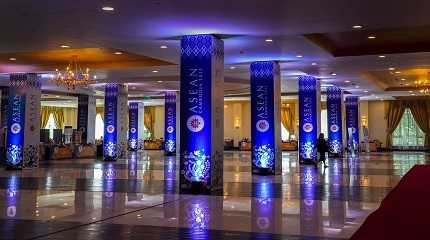
JAKARTA, Jul 16 (NNN-ANTARA) – The series of the Association of Southeast Asian Nations (ASEAN) foreign ministers’ meetings, attended by senior Chinese diplomat, Wang Yi, have sent out three positive messages, a Chinese official said here yesterday.
First, the meetings saw a more peaceful atmosphere. The ASEAN-China Foreign Ministers’ Meeting, held in a friendly and harmonious way, focused on practical cooperation.
With an eye on fostering a regional growth centre, the 10 ASEAN members have given priority to development, which is consistent with China’s concept. Many ASEAN foreign ministers said, ASEAN’s prosperity is closely linked with China’s development, and the ASEAN nations are willing to advance the high-quality joint construction of the Belt and Road with China.
At the ASEAN Plus Three (APT) Foreign Ministers’ Meeting, all parties laid emphasis on sub-regional cooperation, which injected new vitality into the relaunch of trilateral cooperation between China, Japan and South Korea, the official said.
At the East Asia Summit Foreign Ministers’ Meeting and the ASEAN Regional Forum (ARF) Foreign Ministers’ Meeting, which, in the past witnessed differences and conflicts, all parties supported ASEAN centrality and advocated an open and inclusive regional order.
ASEAN has stressed that, the region should not become another arena for power games. The regional countries want solidarity, not division, and call for more communication rather than prejudice and malice.
A certain country made provocative remarks against China at the meetings, which was refuted by China with facts and reasons, the official said. In general, the parties preferred dialogues, coordination and mutually beneficial cooperation to tit-for-tat debates.
Second, the meetings achieve more results. Two major achievements were made at the ASEAN-China Foreign Ministers’ Meeting, the official said.
On the one hand, the meeting adopted the ASEAN-China Joint Statement on Commemorating and Reflecting on the 20th Anniversary of China’s Accession to The Treaty of Amity and Cooperation in Southeast Asia (TAC).
Twenty years ago, China took the lead in joining TAC, when other countries were hesitating, which shows that China has always advocated equality among countries regardless of their sizes and reflects the importance China attached to ASEAN. So far, TAC has 51 members, and ASEAN’s standing has been considerably enhanced.
On the other hand, the meetings announced the completion of the second reading of the Code of Conduct in the South China Sea (COC) text, and adopted a guideline document on an early conclusion of the COC, which created a favourable condition for starting the third reading of the COC text at an early date.
The final conclusion of the COC will greatly enhance mutual trust and expand mutually beneficial cooperation between China and ASEAN, and it will send a clear signal that China and ASEAN do not need condescending instructors, but have full capability and wisdom to properly resolve the South China Sea issue through joint efforts to build the South China Sea into a sea of peace, friendship and cooperation.
Third, the meetings witness more pragmatic interactions, the official said. The Chinese delegation has engaged in more than 10 bilateral meetings. Among them, the China-U.S. meeting has drawn great attention. Both sides agreed that the meeting was candid, pragmatic and constructive.
The Chinese delegation also held meetings with delegations from Japan, South Korea, India and Europe, all of which released positive signals, and all countries expressed their willingness to strengthen dialogue and deepen cooperation with China.




